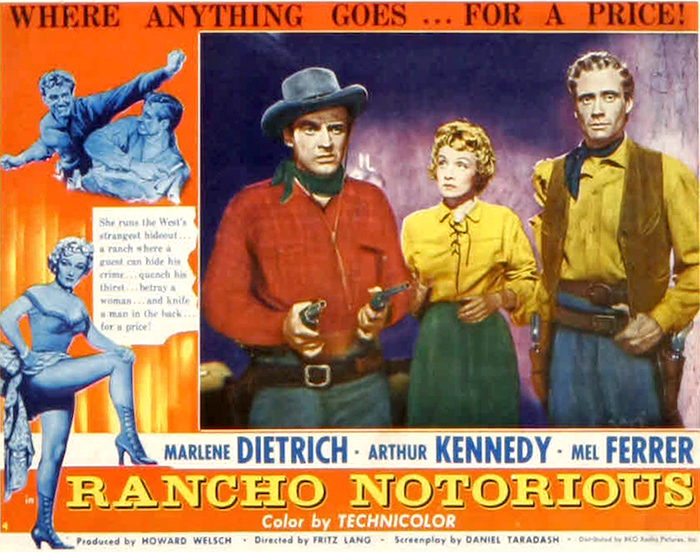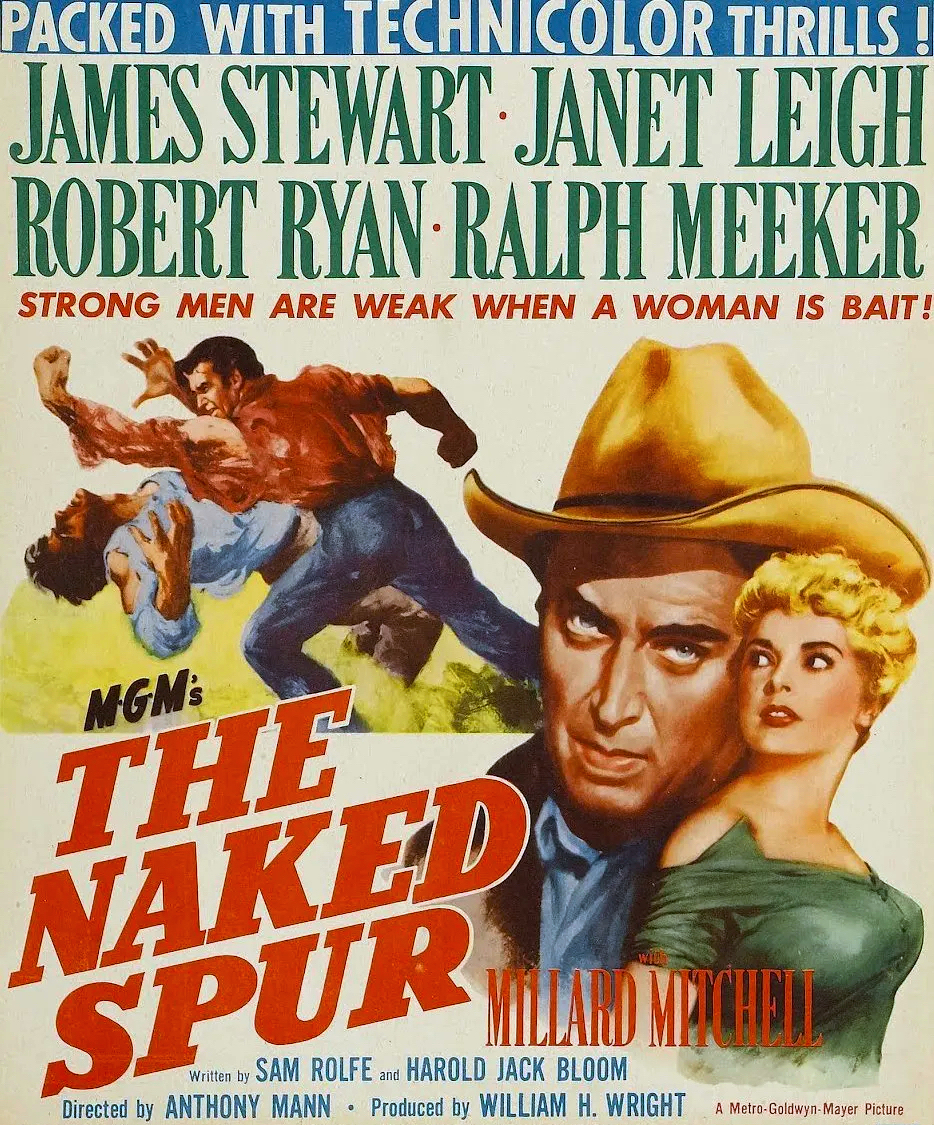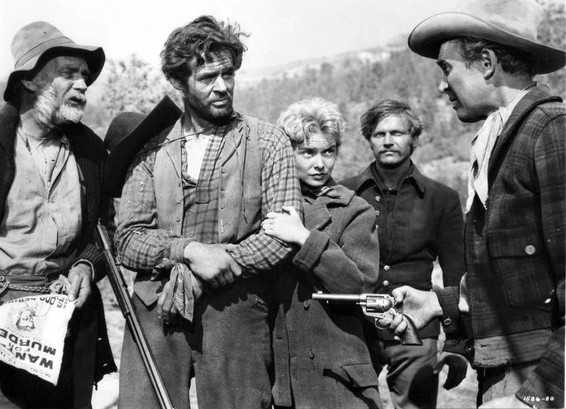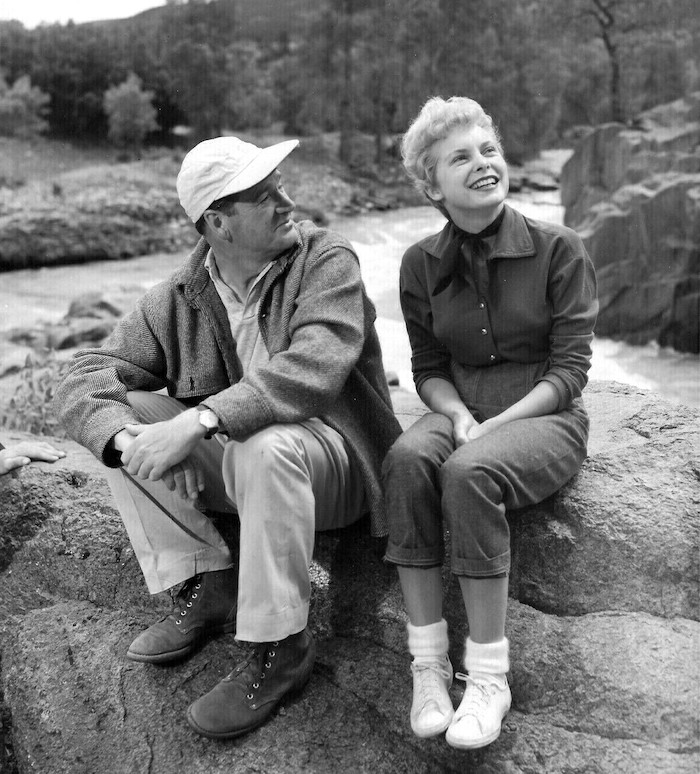Well, here’s one I never thought we’d see, especially on Blu-Ray. Colt .45 (1957-1960) was one of Warner Bros’ Western shows of the late 50s — based (rather loosely) on their 1950 film starring Randolph Scott. It didn’t become a rerun favorite like Maverick or Cheyenne, and they haven’t been seen anywhere in years. (I saw a couple of episodes in 16mm at a Western film show ages ago.) Now all three seasons are available, and looking just heavenly, in a new Blu-Ray set from Warner Archive.
Wayde Preston plays Christopher Colt, a government agent posing as a Colt gun salesman. As he roams the West, he gets involved in all sorts of stuff, usually leading to some fancy shooting on his part. In the first season’s titles, Preston shoots toward the camera, then does some nice pistol-spinning as he puts his twin Colts back in their holsters. (Reminds me a little of the titles to The Rifleman.)
Though they run just half an hour and the budgets were obviously pretty slim, it’s a good show. All the WB Western series looked good, benefitting from excellent stock footage, using some nice WB sets and boasting terrific guest stars. Colt .45 featured Charles Bronson, Wayne Morris, Angie Dickinson, Robert Conrad, John Doucette, Ray Teal, Frank Ferguson, I. Stanford Jolley, Kathleen Crowley, Lee Van Cleef, Jack Lambert, Glenn Strange, Leonard Nimoy, Virginia Gregg, Paul Fix, Robert J. Wilke, Dorothy Provine, Lyle Talbot, Roy Barcroft, Adam West and Sandy Koufax(!).
Some solid directors worked on it, too — guys like Lee Sholum, Paul Landres, George Waggner, Lew Landers, Edward Bernds and Oliver Drake.
The first season is excellent, but then things kinda went awry. Wayde Preston left the show (the usual pay dispute, they say), making for a short second season. For the third season, Donald May took over as Sam Colt, Jr., Christopher Colt’s cousin.
Warners evidently badmouthed Preston and he had a hard time landing parts around town. He was brought back toward the end of the third season, now supporting his cousin Sam. Colt .45 didn’t last beyond that third season and Preston eventually headed to Italy to make spaghetti Westerns and Anzio (1968).
With just two-and-a-half seasons (only 67 episodes), and a star who disappears midstream, it sorta makes sense that Colt .45 wouldn’t enjoy the perpetual syndication of other Western shows of the period. When it’s good, it’s really good, usually because of a solid story or an exemplary performance — Wayne Morris and John Doucette, for example, are excellent in their episodes.
Then there are the Blu-Rays. I’ve never seen a black & white TV show look this good — ever. There’s not a lot of old TV on Blu-Ray. I Love Lucy! and The Andy Griffith Show are, and they can’t hold a digital candle to this set. It’s stunning. From the logo in the grips of Preston’s Colts to the sewn-up holes in John Doucette’s shirt, the detail here is really incredible. (Of course, this highlights stuff like the stock footage stage driver looking nothing like the guy who speaks to Preston seconds later, but who cares?) The contrast is perfectly dialed in and the grain is just right. Whoever twiddled the knobs on this thing, I’d like to buy you lunch! Same goes for the folks in the vaults watching over this old material.
In short, the fact that Colt .45 made its way to video at all is a real surprise. That it would come out of left field looking like this, well, that seems like a miracle. Colt .45 – The Complete Series comes highly recommended. I think you’ll like the show, and I know you’ll be blown away by the care Warner Archive has given it.




































